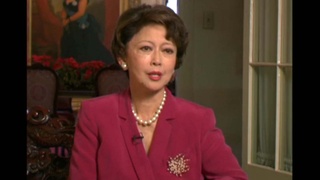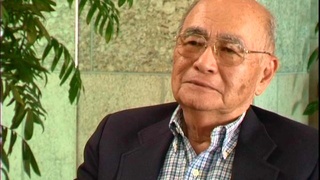Interviews
Decision to run for governor
I think that the Bar Association in Hawaii, we had many non-Caucasian lawyers. But, they didn’t belong to the big law firms. And the large law firms still controlled the bulk of the business, and they were Caucasian law firms that none of us could really join at that time, or very few of us could join. So most of us started off as sole(?) practitioners, or working with people who were sole(?) practitioners. I was very concerned as I began to...in my practice, I began to understand how difficult it was in Hawaii for some people.
And I remember meeting Jack Burns through a friend of mine. And Jack Burns asking me a lot of questions about how I felt when I was growing up and how I feel now as I started to practice law. And I told him that I grew up and I worked and I studied and I fought and I played with boys and girls of all different background. I never felt any prejudice. I never felt any unfairness. But as I began to work, I began to feel that we had a system here in Hawaii where you work yourself up to a certain level, and if you weren’t going with the right crowd, that’s all you went to—you couldn’t get beyond there. And he told me, “Run for office.” I thought he was talking to someone else, so I turned around and looked, and he said, “No, no. You run for office.” And my response that I’m too young and nobody knows me. He said, “No, that’s not what it is. It’s your heart. It’s how you feel. See, you run for office this year and there will be a number of others who will be running for office.”
At the time that he was saying this to me, at that meeting, it was only three days to the filing deadline, and it was only 33 days before the primary election. And the district that I would... we have about 35 or 36 representative districts now. But at the time that he was talking to me, we had only two representative districts. And the district I would have run in covered about 85% of this island of Oahu. And so, when I made the decision to run, my friend took me to Ala Moana Park, and we talked about running for office. And I couldn’t decide then. And I waited until the last day. And when I'd made that decision I had only 30 days before the election.
Date: December 15, 2003
Location: Hawai`i, US
Interviewer: Art Hansen
Contributed by: Watase Media Arts Center, Japanese American National Museum.





